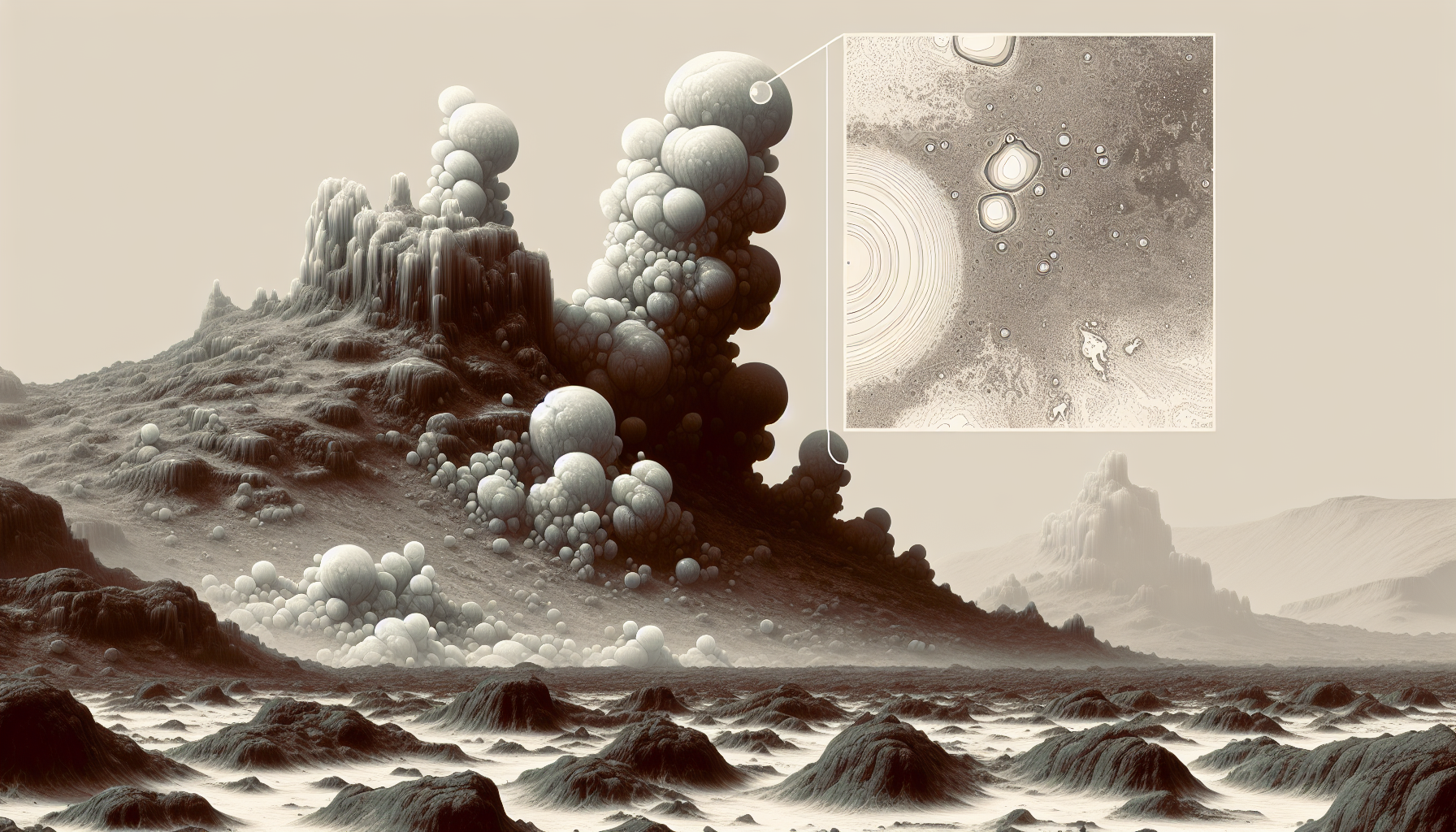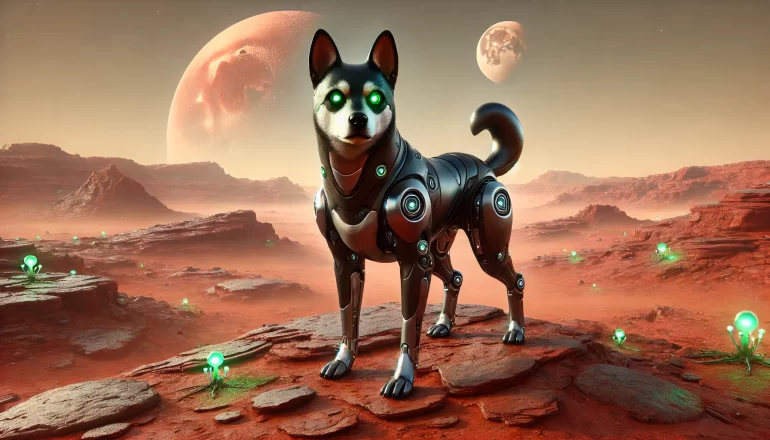- Empty cart.
- Continue Shopping
Mysterious Blobs Including ‘Martian Dog’ Discovered Under Mars’ North Pole – Martian

Martian Dog :
Mysterious Blobs Including ‘Martian Dog’ Discovered Under Mars’ North Pole
Exploring the enigmatic terrain of Mars continues to yield fascinating discoveries. In an astounding breakthrough, scientists have uncovered several mysterious blobs under Mars’ North Pole through a new gravity map, including one intriguingly dubbed the ‘Martian Dog’. These unexpected findings are not only captivating but hold the potential to dramatically reshape our understanding of the Red Planet’s geological and potentially biological history.
Gravity Map Reveals Hidden Martian Features
The recent discoveries were made possible by advanced gravity mapping techniques. A comprehensive gravity map of Mars’ North Pole was generated using data from various missions and instruments. This map offers a detailed view of sub-surface anomalies that were previously undetectable.
- The data shows variations in gravitational pull across the region, uncovering hidden structures beneath the icy surface.
- Scientists utilized high-resolution data from orbiting spacecraft to pinpoint these anomalies.
- The map is part of an ongoing effort to better understand Mars’ geology and climate history.
The Discovery of the ‘Martian Dog’
Among the newfound anomalies, one has been nicknamed the ‘Martian Dog’ due to its distinctive shape resembling a canine figure. This particular structure stands out for its unique configuration and significance.
- The ‘Martian Dog’ is one of the most prominent anomalies detected under the ice.
- It consists of a series of interconnected ridges and valleys.
- This formation could indicate a complex geologic process or even past tectonic activity.
Implications for Mars’ Geological History
The discovery of these mysterious blobs has potentially far-reaching implications for our understanding of Mars. Here are some key reasons why these findings are crucial:
- Indication of Water Activity: The sub-surface features could be remnants of ancient water flows or underground lakes, suggesting Mars had a more dynamic hydrological history.
- Geological Processes: The structures might provide insights into Martian tectonic and volcanic activity, shedding light on how the planet evolved.
- Climate History: Understanding these features could help reconstruct the climatic conditions on Mars over millions of years.
Potential for Future Exploration
The advent of advanced gravity mapping has paved the way for future Martian explorations. Identifying and examining these sub-surface anomalies can direct future missions to potential drill sites or landing zones.
- Robotic Missions: Rovers equipped with drilling mechanisms could probe these anomalies to search for signs of past life or underground water reservoirs.
- Human Exploration: If Mars is eventually colonized, understanding its sub-surface structures will be pivotal for building stable habitats.
- Resource Utilization: Sub-surface water, if accessible, could be a vital resource for sustainable long-term missions.

Technological Innovations Behind the Discoveries
The innovative technologies used in mapping and analyzing Mars’ North Pole cannot be understated. Without them, these mysterious blobs might have remained concealed beneath the ice. Here’s a closer look at the tech driving these discoveries:
Gravity Mapping Techniques
- High-Resolution Instruments: Instruments such as MRO’s (Mars Reconnaissance Orbiter) SHARAD (Shallow Radar) have provided detailed sub-surface images.
- Data Integration: Combining data from various missions like Mars Odyssey and MAVEN (Mars Atmosphere and Volatile EvolutioN) for comprehensive analysis.
- Advanced Algorithms: Utilization of robust data processing algorithms to interpret gravitational anomalies accurately.
Collaborative Efforts
- International collaboration between NASA, ESA (European Space Agency), and other space research organizations.
- Sharing of data and research methodologies to refine mapping and analysis techniques.
- Leveraging global expertise in geology, planetary science, and astrobiology for a holistic understanding.
These technological advancements reinforce the importance of continued investment in space exploration to uncover the mysteries of our planetary neighbors.
Conclusion
The discovery of the ‘Martian Dog’ and other mysterious blobs under Mars’ North Pole is a monumental step in unraveling the many secrets of the Red Planet. With each new finding, we come closer to understanding Mars’ past, present, and its potential to harbor life.
As technology progresses and new missions embark on their journey to Mars, we can expect even more astonishing revelations. For now, the enigmatic ‘Martian Dog’ invites intrigue and promises to be a cornerstone in Martian geological studies.
Unbeatable Pet Accessory Discounts on Amazon!
Watch funny and cute dog videos!

















